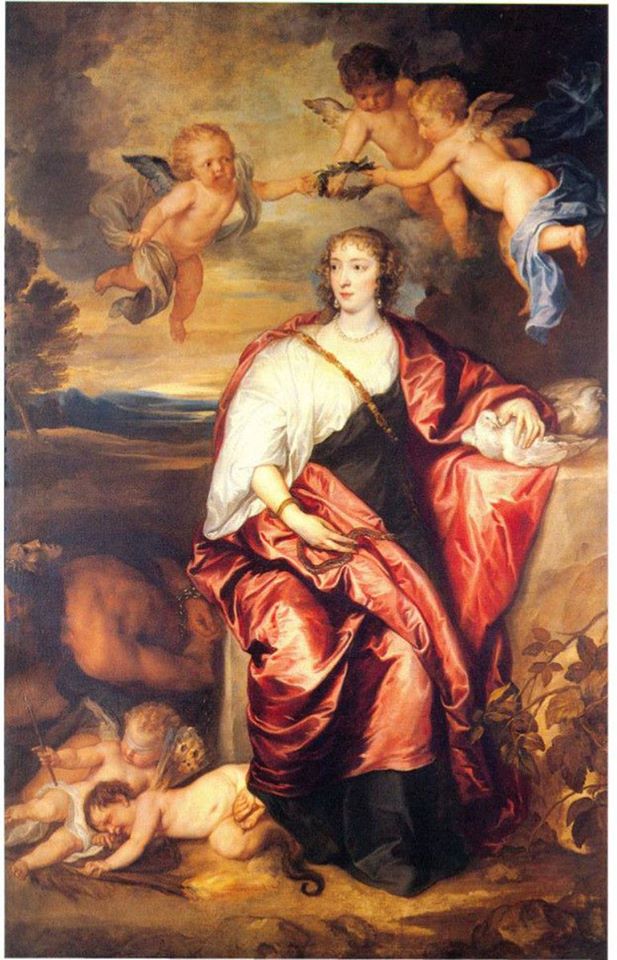ROYAL PALACE MASTERPIECES: portrait of Lady Digby
Lady Venetia Digby as allegory of Prudence, painted by Antoon Van Dyck in 1633 (oil on canvas, 242 x 155 cm), is found in the inventory of the Royal Palace since 1857 and today is exposed in the Left Antechamber. Venetia Stanley, wife of Sir Kenelm Digby, was one of the most admired ladies of the English aristocracy at the time of King Charles I: her love adventures were as famous as her beauty, exalted by a complexion compared to the "roses of Damascus".
The painting of the Royal Palace is both a memory of fresh beauty and an authentic symbolic "monument" to the virtues of the lady, probably executed immediately after her early death on May 1, 1633.
In the portrait three cupids carry a laurel wreath on the head of the noblewoman as a homage to her virtue. Dressed in a wide red cloak "old fashioned" but with a hairstyle and jewels that correspond to the fashion of her time, the lady is sitting on a simple square block of stone, a symbol of moral solidity.
Van Dyck exalts the freshness of the young woman’s complexion, even proverbial in the circles of the London aristocracy. Lady Venetia fondles two white doves, a symbol of innocence and marital fidelity. In the right hand she holds a snake, traditional attribute of the virtue of Prudence: this detail has made erroneously think in the past that it could be a reference to Queen Cleopatra.
On the left, three allegorical figures lie on the ground: in the background the Fraud, with two faces and chained; further on, the Profane love, blindfolded, and another Cupid in tears, with the torch off and with the legs ending in a snake’s tail, as an allusion to sin.
A splendid example of a great baroque portrait, it shows the intelligent mediation between Italy and Flanders, and in particular between Titian and Rubens, the constant points of reference for Van Dyck. The rich celebration of symbols and allegorical figures is combined with the radiant image of the beautiful lady, in a dynamic and refined pose.
